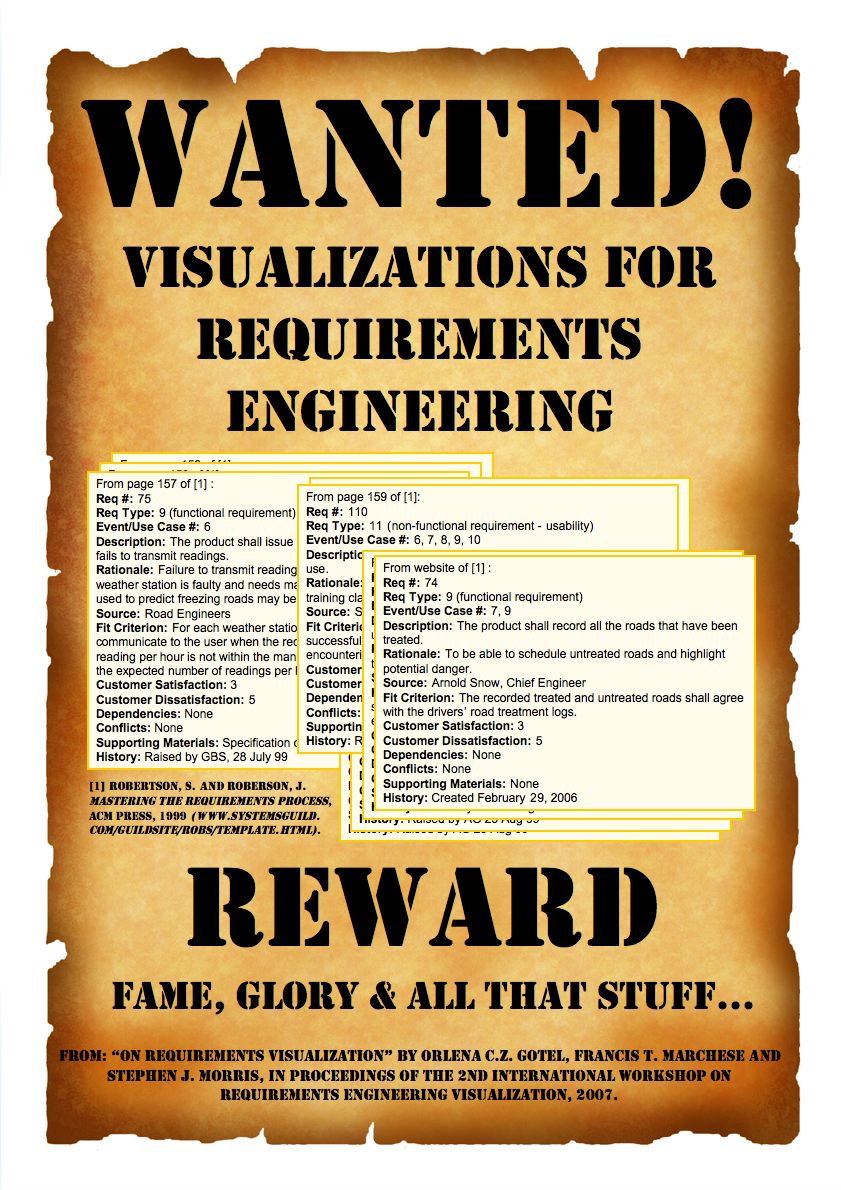
Held in conjunction with RE'10
Program
Themes for REV'10
Topics for REV'10
Goals for REV'10
Targeted Attendees
Workshop Format and Duration
Submission Types
Submission Procedures
Important Dates
Papers From the REV Series
Program Committee
Workshop Co-Chairs
Check out the images on this page to see some of the wonderful contributions from previous years' papers. Click on the images to see larger versions.
|
Left and center visualizations by: Martin S. Feather (California Institute of Technology), Steven L. Cornford (California Institute of Technology), James D. Kiper (Miami University) and Tim Menzies (West Virginia University), from “Experiences using Visualization Techniques to Present Requirements, Risks to Them and Options for Risk Mitigation” in Proceedings of REV’06 (with kind permission). Right visualization by: Neil A. Ernst, Yijun Yu and John Mylopoulos (University of Toronto), from “Visualizing Non-Functional Requirements” in Proceedings of REV’06 (with kind permission). |
The final program can be downloaded HERE along with a PARTICIPANT GUIDE.
REV’10 aims to be an interactive event. The sessions are organized to provoke discussion amongst the Presenters of papers, the Discussants of these papers and other participants. Each paper will be assigned a discussant from amongst the registrants two weeks prior to REV (paper and critique format will be provided). All REV papers will also be represented by a physical A2-size color poster and discussed. These posters will be displayed in the official RE’10 poster session.
| 09:00 – 09:10 | Welcome to REV’10 and Program Overview – Brian Berenbach and David Callele – SLIDES |
| 09:10– 10:30 | Session 1: Visualizing Goals and Concerns Moderator: Brian Berenbach |
|
|
| 10:30 – 11:00 | Coffee/Tea Break |
| 11:00 – 12:30 | Session 2: Visualizing NFRs and Interactive Session Moderator: David Callele |
|
|
| 12:30 – 13:30 | Lunch |
| 13:30 – 15:00 | Session 3: Mini MERE (Multimedia and Games to Augment Visuals) |
|
|
| 15:00 – 15:30 | Coffee/Tea Break |
| 15:30 – 17:00 | Session 4: Towards a Unified Requirements Modeling Language Moderator: Brian Berenbach |
|
While papers are invited on any topic related to visualization techniques, as applied to requirements engineering, this year we would like to focus on systems and infrastructure. We would especially encourage researchers and practitioners to submit papers on the use of RE visualization techniques for systems and infrastructure (e.g., “shovel ready” civil works) projects.
Civic works projects are examples of projects where the RE effort can be extraordinarily challenging. Examples of such projects include rail, airport, and regional upgrades, emergency management systems, and many other types of projects in the public domain. First, requirements are elicited from a wide variety of stakeholders. Second, thirty percent or more of the requirements cross-cut many areas of the deliverables and can be difficult to manage across multiple subcontractors. Finally, such projects fall under the jurisdiction of a plethora of regulatory agencies, and determining the impact of their regulatory codes on the traditional project requirements (e.g., environmental, civil, electrical, mechanical, etc.) can be quite challenging.
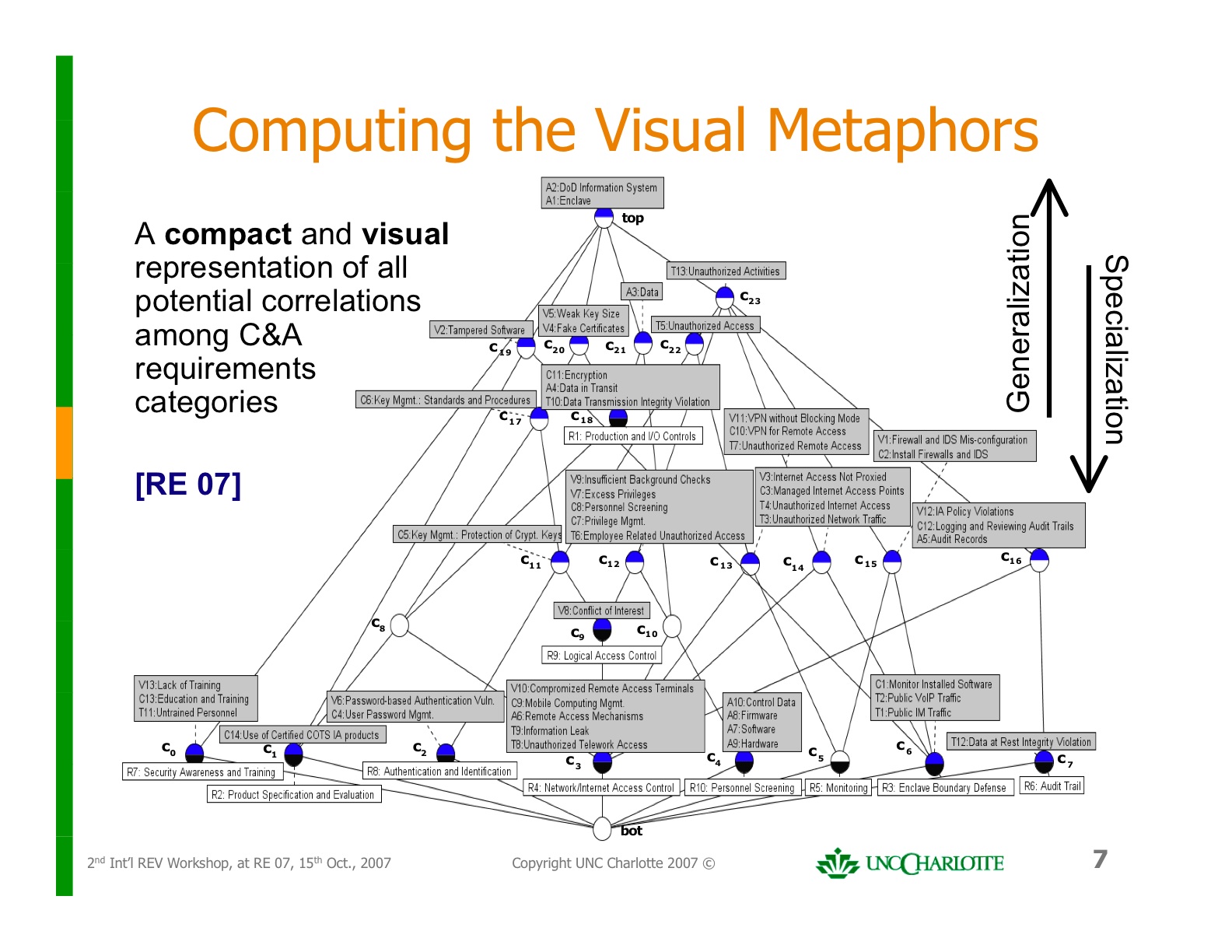
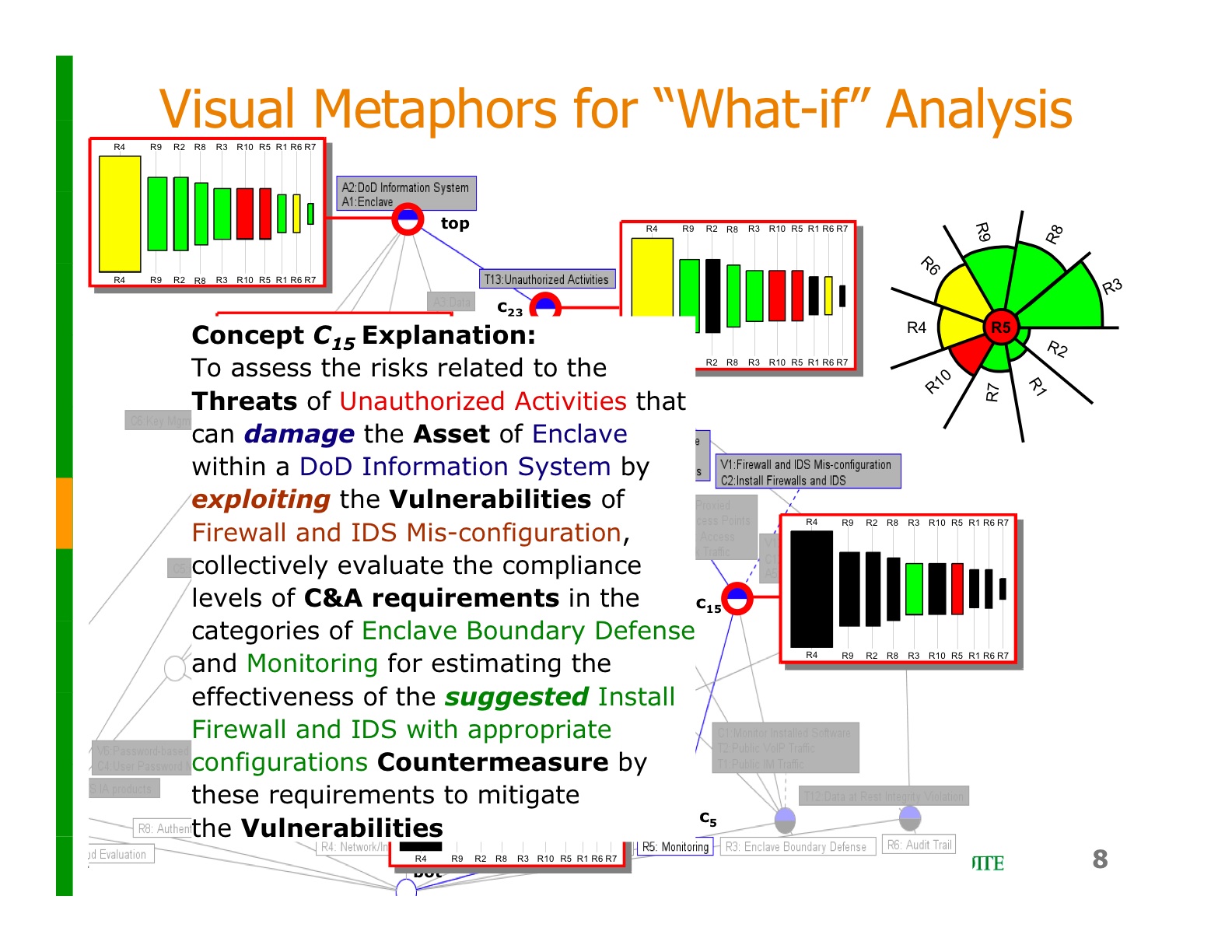
Both visualizations by: Robin A. Gandhi and Seok-Won Lee (University of North Carolina at Charlotte), from "Visual Analytics for Requirements-driven Risk Assessment" in Proceedings of REV’07 (with kind permission).
Topics of interest include experience papers, formal methods, emerging technologies, best practices, research proposals, evaluations and comparisons that focus on visualization techniques for requirements engineering activities. Typical topics of interest include, but are certainly not limited to:
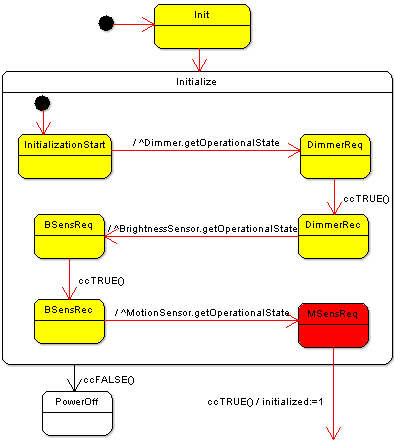
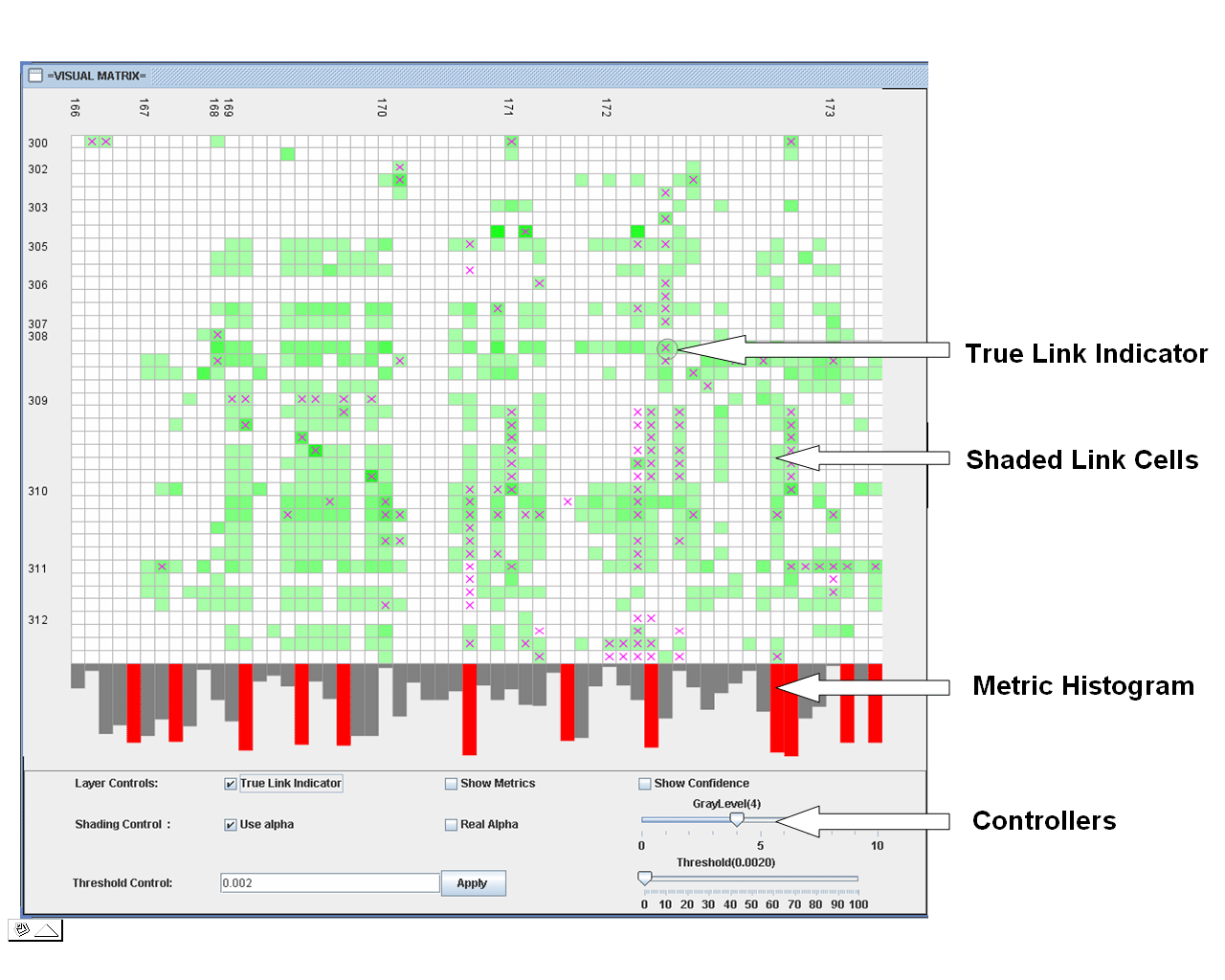
Left visualization by: Sascha Konrad, Heather Goldsby, Karli Lopez and Betty H.C. Cheng (Michigan State University), from “Visualizing Requirements in UML Models” in Proceedings of REV’06 (with kind permission); right visualization by: Chuan Duan and Jane Cleland-Huang (DePaul University), from “Visualization and Analysis In Automated Trace Retrieval” in Proceedings of REV’06 (with kind permission).
The format of REV’10 will provide attendees with an opportunity to become familiar with a new topic and establish a good foundation for discussions about visualization in requirements engineering. We intend to make the workshop discussion and interaction oriented. Paper presentations will be used to provoke dialogue and plenary sessions will be held.
Participants will be expected to bring along a poster illustrating the visual aspects of their submissions to support workshop discussions. In previous REV workshops, these posters were then ported to the poster session of the main RE conference, reinforcing the quality and quantity of the displayed posters. We intend to continue this practice.
Duration: 1 day (9:00 to 17:30)
Date: Tuesday 28th September, 2010
Left visualization by: Gunter Mussbacher (University of Ottawa), Daniel Amyot (University of Ottawa) and Michael Weiss (Carleton University), from “Visualizing Aspect-Oriented Requirements Scenarios With Use Case Maps” in Proceedings of REV’06 (with kind permission); right visualization by: Irwin Kwan, Daniela Damian and Margaret-Anne Storey (University of Victoria), from “Visualizing Requirements-Centered Social Network to Maintain Awareness within Development Teams” in Proceedings of REV’06 (with kind permission).
Position papers (3-5 pages) Short papers state the position of the author(s) on any of the topics within the scope of the workshop. For example, position papers could describe initial experience with a particular visualization technique, propose an area of requirements engineering that could benefit from more innovative forms of visualization or illustrate how visualization techniques from other domains may be applicable to requirements engineering problems. Position papers will be evaluated based on their potential for generating discussion, and on the originality of the positions expressed.
Full papers (8-10 pages) Full papers describe and report on the evaluation of visualization techniques in support of requirements engineering activities. For example, a full paper could describe how a comparative evaluation of visualization techniques was performed in practice, either by controlled experimentation in the lab or in an industrial setting; or it may present the results of the actual performance of tools, methods or processes that embed visualization components, in lab-based experiments or field trials. Survey papers that review and critique the range of and/or use of visualization techniques applicable to requirements engineering are also invited. Full papers will be evaluated based on the originality and significance of the contribution, soundness of the validation process or quality of the survey procedure, and on the broader applicability of the results.
Publication of accepted papers
The full RE’10 workshop proceedings will be published online in the IEEE CS Digital Library.
The IEEE Computer society has recently modified their formatting template. All papers must comply to the new guidelines:
http://www.computer.org/portal/web/cscps/formatting
MS Word guidelines
PDF guidelines
One author of an accepted paper is required to register for the REV'10 workshop by 6 August 2010 (else the paper will be withdrawn).
Prospective authors will beinvited to submit high quality papers written in English via the EasyChair submission system: http://www.easychair.org/conferences/?conf=rev10
9 July, 2010: Deadline for workshop submission
28 July, 2010: Notification to authors
28 September, 2010: REV'10 workshop
All deadlines are 23:59 Apia, Samoa time.
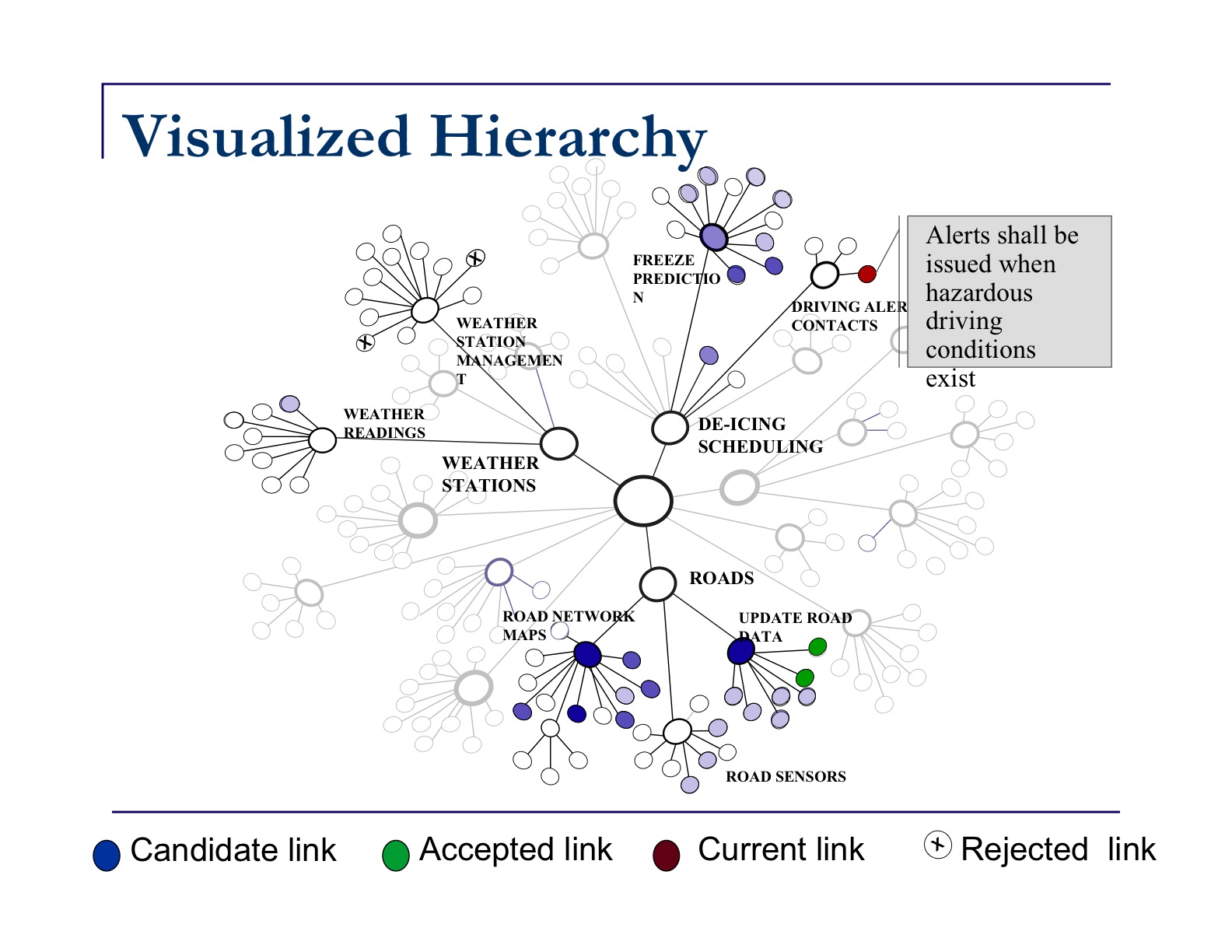
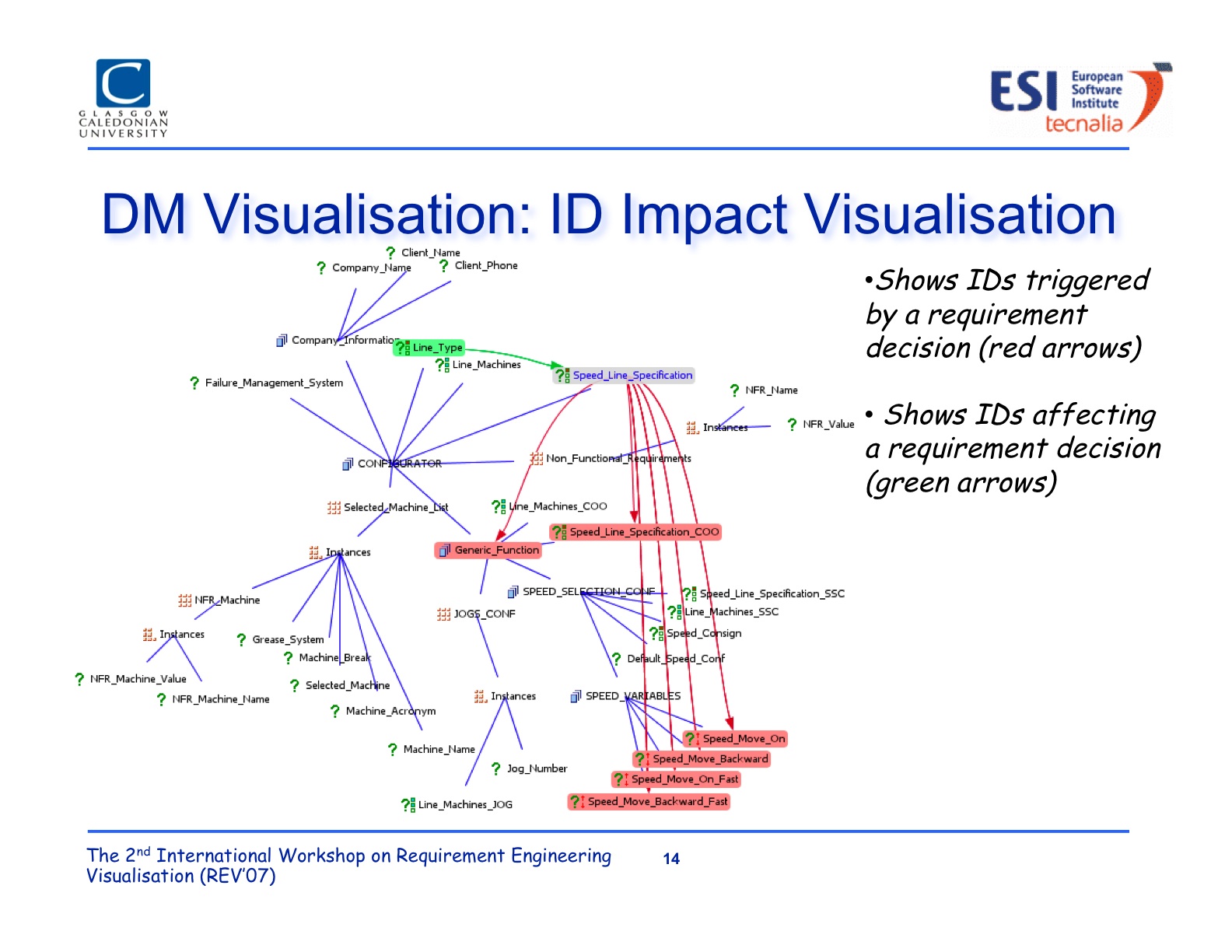
Left visualization by: Jane Cleland-Huang and Rafal Habrat (De Paul University), from "Visual Support in Automated Tracing in Proceedings of REV’07 (with kind permission); right visualization by: David Sellier and Mike Mannion (Glasgow Caledonian University), from "Visualising Product Line Requirement Selection Decision Inter-dependencies" in Proceedings of REV’07 (with kind permission).
Visualization by: Martin S. Feather (California Institute of Technology), Steven L. Cornford (California Institute of Technology), James D. Kiper (Miami University) and Tim Menzies (West Virginia University), from “Experiences using Visualization Techniques to Present Requirements, Risks to Them and Options for Risk Mitigation” in Proceedings of REV’06 (with kind permission).
Brian Berenbach
Requirements Engineering Program Manager
Siemens Corporate Research
755 College Rd. East
Princeton, NJ 08540-6632
Tel: (609) 734-3395
Fax: (609) 734-6565
Email: brian.berenbach@siemens.com
Website: http://www.scr.siemens.com/en/pages/RequirementsEngineering
Brian Berenbach is the manager of the requirements engineering competency center at Siemens Corporate Research, Inc., operated for Siemens AG, a global company with earnings in excess of $90 Billion. Mr. Berenbach's responsibilities include training Siemens employees and conducting research and process improvement in all aspects of requirements engineering. Mr. Berenbach is an ACM distinguished engineer.
Olly Gotel
Independent Researcher
New York City
Email: olly@gotel.net
Website: http://www.gotel.net
Dr. Gotel has been active in the area of Requirements Engineering for the past 20 years and holds a PhD from Imperial College, University of London, focusing on Traceability. Olly was the co-author of the most influential paper over a 10-year period from the 1st Conference on Requirements Engineering, held in 1994, on this topic. In addition to academic research and teaching positions in the UK and US, Olly has held senior positions within the UK defense industry doing Systems Requirements Engineering, and furthers the transfer between research and practice through organizing the professional programs of the New York City Software Process Improvement Network. Olly's long-term goal is to make Requirements Engineering more visual and much better fun!
David Callele
TRLabs Saskatoon
111 - 116 Research Drive
Saskatoon, SK, CAN, S7N 3R3
Email: djc544@mail.usask.ca
David is Saskatchewan Business Development Manager for TRLabs, a Western Canadian research, development, and professional services consortia. David's responsibilities include identifying commercialization opportunities for new technologies, technology forecasting, forging strategic partnerships for economic development, identifying business opportunities, business and technology mentorship, and requirements engineering leadership. David is also a Doctoral candidate in the Department of Computer Science at the University of Saskatchewan where his research focus is on effective requirements engineering in the creative (preproduction) phase of video game development and on managing the transition between preproduction and production efforts.